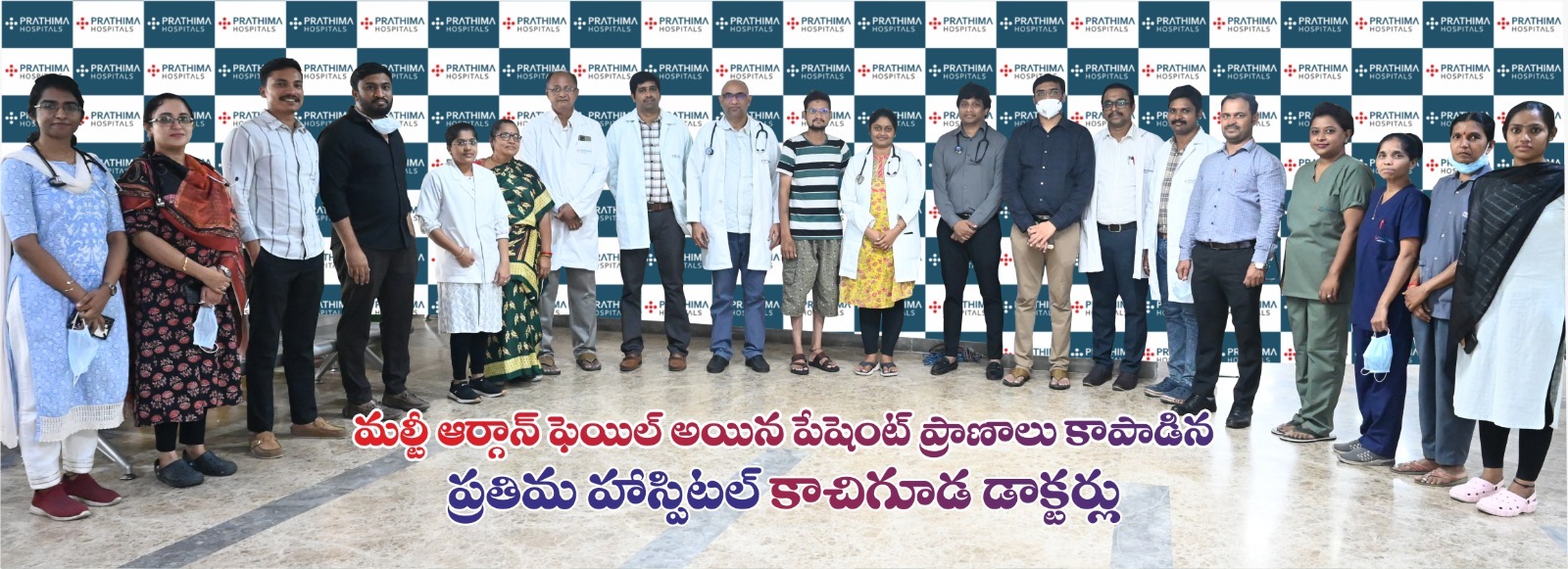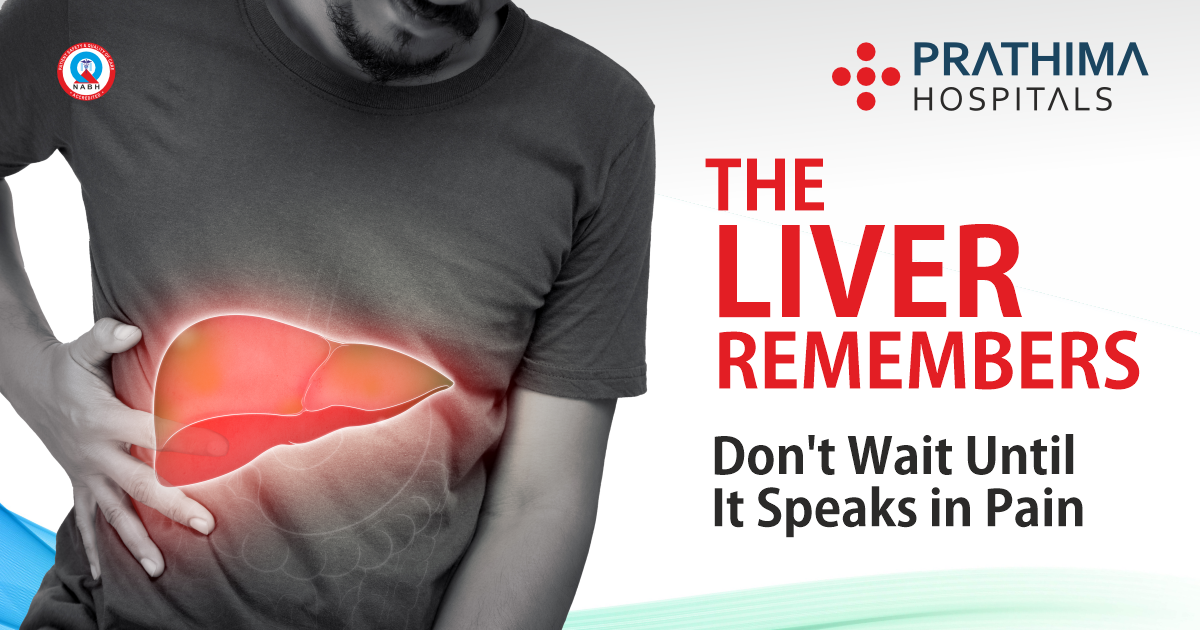Near Death to New Life: A Journey of Hope

“From the Brink of Death to a Miracle: United Medical Effort Saves Diabetic Patient with Multiple Organ Failure”
Hyderabad, May 2025: In a rare and heart-touching display of medical brilliance, teamwork, and relentless dedication, a critically ill diabetic patient who was diagnosed with a life-threatening condition called “Encritomia” and was on the verge of multiple organ failure, has made a miraculous recovery at Prathima Hospital. Thanks to the timely and coordinated intervention by a multidisciplinary team of specialists led by Dr. Haricharan, Senior Physician and Critical Care Expert, the patient was brought back from the edge of death.
This inspiring case isn’t just about modern medicine, but also about the courage of a patient, the empathy of healthcare professionals, and the power of teamwork in saving lives.
A Routine Day That Turned into a Nightmare
It all began like any other day. The middle-aged diabetic patient, who has requested to remain anonymous, was feeling unusually fatigued and confused. Having a long-standing history of diabetes, the family assumed it was a sugar imbalance. However, his condition quickly deteriorated. He experienced sudden breathlessness, a sharp drop in blood pressure, disorientation, and decreased urine output. Alarmed, the family rushed him to Prathima Hospital, where a routine check-up turned into a life-saving mission.
The on-duty emergency physician, upon initial assessment, noted dangerously low oxygen saturation, electrolyte imbalance, and an abnormal ECG. The patient was semi-conscious, with signs of sepsis setting in. A quick but thorough evaluation revealed an alarming diagnosis: Encritomia, a rare but severe condition that acts as a precursor or trigger for multi-organ dysfunction, particularly dangerous in individuals with chronic conditions like diabetes.
A Grim Diagnosis: Multiple Organ Failure
Further investigations, including blood tests, imaging, and organ function assessments, confirmed the worst fears of the medical team. The patient was going into multiple organ failure, the kidneys were failing, the lungs were inflamed, the heart was unstable, and the liver was beginning to lose function. The sepsis was spreading fast, and time was running out.
Rather than giving in to the grim situation, Dr. Haricharan immediately activated a Code Multi-Organ, a special protocol at Prathima Hospital designed for precisely such life-threatening emergencies. He brought together a super-specialist team including nephrologists, cardiologists, intensivists, pulmonologists, endocrinologists, and critical care nurses.
slowly began returning to normal. By Day 5, the ventilator settings were reduced, and on Day 7, the patient was breathing on his own.
In what can only be described as an emotional moment, the patient opened his eyes, recognized his family, and whispered a faint “Thank you” to the team standing around him.
Dr. Haricharan Speaks :
Speaking to the media, Dr. Haricharan, the lead General Physician, said:
“This was a race against time. Every minute counted. Our team worked with unity, compassion, and relentless focus. We believe in treating not just organs, but the whole person. This recovery is a testament to the power of collaborative medicine.”
He also emphasized the importance of early recognition and hospital admission in such critical conditions. “Diabetic patients are vulnerable to multiple complications. Encritomia is a rare but serious condition. Early medical intervention can save lives, as we have seen here.”
Back on His Feet: The Patient’s Message
Ten days after being admitted to the ICU, the patient was transferred to a step-down unit and later discharged with stable vitals. Walking out of the hospital with assistance, he expressed deep gratitude:
“I don’t remember much from those days, but I know I wouldn’t be alive without this team. I was dead and now I am alive. They gave me a second chance.”
The Hospital’s Vision: Life Over Limitations
This case reinforces Prathima Hospital’s commitment to holistic, patient-centric, and technologically advanced medical care. The hospital has consistently invested in critical care infrastructure, skilled professionals, and evidence-based protocols to handle such complex emergencies.
The recovery of this patient is not just a clinical win, but a celebration of hope, humanity, and healing.
In an age where medical news is often filled with challenges and losses, stories like these remind us of what medicine truly stands for, the fight for life against all odds. A diabetic man, nearly lost to multiple organ failure, walks out alive, thanks to a team that refused to give up.
The case is not just about survival, it’s about the power of compassionate care, dedication, and unity in medicine.
A Symphony of Saving Lives: The Multidisciplinary Approach
What followed next was nothing short of a medical symphony. Each specialist focused on stabilizing one organ at a time, like a well-coordinated orchestra playing for a single purpose, saving a life.
- Kidney support began with emergency dialysis to flush out toxins from the body.
- The cardiac team managed fluctuating blood pressure and stabilized the heart with medications and continuous monitoring.
- Pulmonologists managed the lungs with mechanical ventilation and special fluid management to prevent fluid overload.
- Endocrinologists worked closely to stabilize blood glucose levels and manage underlying diabetic complications.
- Liver function was supported with targeted medications and antioxidants to reduce hepatic stress.
- Intensivists and ICU staff ensured real-time coordination, 24×7 monitoring, and rapid response to even the smallest change in the patient’s status.
Throughout this intense effort, the patient remained on ventilator support and continuous renal replacement therapy (CRRT), requiring high-end ICU care and complex interventions.
Emotional Moments in the ICU
The patient’s family, shattered by the rapid turn of events, waited outside the ICU with tears and prayers. The doctors made it clear that while they were doing everything possible, the next 48 hours would be critical.
“I saw the team working like a well-oiled machine. There was no ego, no hierarchy, only one goal, to save my husband,” the patient’s wife recalled tearfully. “I will never forget how they updated us every hour, not just as doctors, but like family.”
Nurses stood beside the patient for hours, talking softly, adjusting monitors, and ensuring that even during unconsciousness, he was cared for like a human being, not just a case.
A Ray of Hope: The Turnaround
After 72 hours of intense treatment, the first signs of improvement emerged. Urine output increased. Blood pressure began to stabilize without medication. Liver and kidney markers
For More Details:
📞:: 733 733 6600 | 040 4345 4345
🌐:: https://prathimahospitals.com/






Warning: Undefined variable $req in /home/u885608126/domains/prathimahospitals.com/public_html/wp-content/themes/prathimahospitals/functions.php on line 294
Warning: Undefined variable $commenter in /home/u885608126/domains/prathimahospitals.com/public_html/wp-content/themes/prathimahospitals/functions.php on line 295
Warning: Trying to access array offset on value of type null in /home/u885608126/domains/prathimahospitals.com/public_html/wp-content/themes/prathimahospitals/functions.php on line 295
Warning: Undefined variable $aria_req in /home/u885608126/domains/prathimahospitals.com/public_html/wp-content/themes/prathimahospitals/functions.php on line 295
Warning: Undefined variable $req in /home/u885608126/domains/prathimahospitals.com/public_html/wp-content/themes/prathimahospitals/functions.php on line 298
Warning: Undefined variable $commenter in /home/u885608126/domains/prathimahospitals.com/public_html/wp-content/themes/prathimahospitals/functions.php on line 299
Warning: Trying to access array offset on value of type null in /home/u885608126/domains/prathimahospitals.com/public_html/wp-content/themes/prathimahospitals/functions.php on line 299
Warning: Undefined variable $aria_req in /home/u885608126/domains/prathimahospitals.com/public_html/wp-content/themes/prathimahospitals/functions.php on line 300
Warning: Undefined variable $commenter in /home/u885608126/domains/prathimahospitals.com/public_html/wp-content/themes/prathimahospitals/functions.php on line 303
Warning: Trying to access array offset on value of type null in /home/u885608126/domains/prathimahospitals.com/public_html/wp-content/themes/prathimahospitals/functions.php on line 303